You’re sitting on your couch, controller in hand, tearing around a virtual racetrack in Gran Turismo, the roar of digital engines pumping through your speakers. You nail every corner, leave your competition in the dust, and cross the finish line first. For most of us, that’s where the fantasy ends. But for Jann Mardenborough, it was just the beginning.
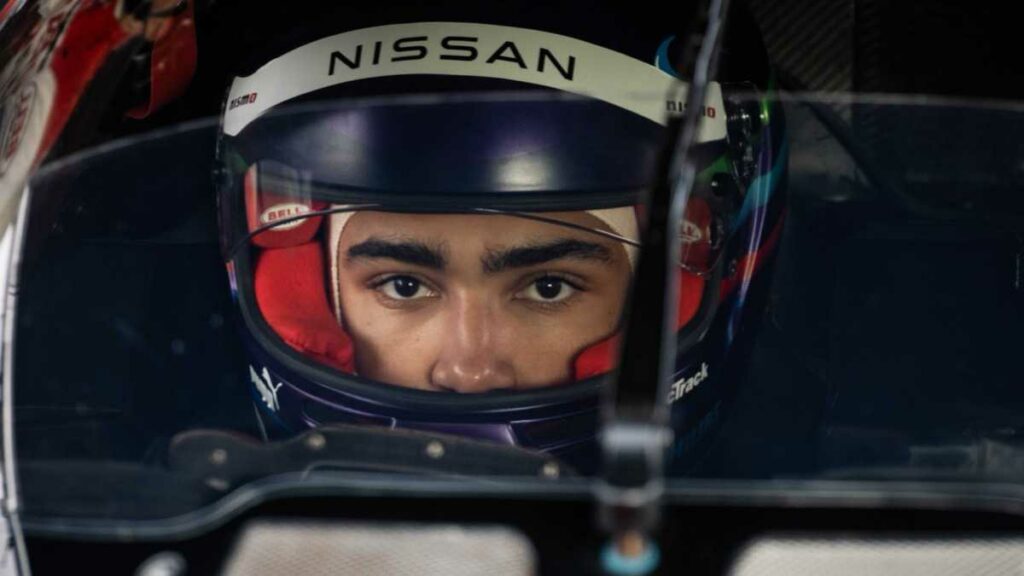
Gran Turismo: Based on a True Story takes that wild daydream – where gaming can lead to real-world glory – and turns it into an adrenaline-fueled, big-screen spectacle. Based on the true story of a gamer-turned-professional racer, this film doesn’t just celebrate the thrill of motorsport. It’s about breaking boundaries and proving that virtual skills can translate into real-world success. Whether you’re a seasoned petrolhead or someone who’s never stepped foot in a pit lane, this film takes you on a wild ride from console to cockpit.
Neill Blomkamp directed this, which isn’t just your standard underdog sports movie. It’s a crossover event between the gaming and racing worlds – a fusion of fast cars, faster reflexes, and the dream of turning pixels into podiums. Buckle up because Gran Turismo puts the pedal to the metal in a way that’ll leave your inner gamer fist-pumping and your motorsport-loving heart racing.
Plot and Storytelling
Gran Turismo: Based on a True Story doesn’t take the scenic route – it blasts straight into the action with a story as fast-paced as the cars on track. This is the story of Jann Mardenborough, a young gamer whose racing skills in Gran Turismo earn him a shot at real-life glory through Nissan’s GT Academy. But unlike your typical “zero to hero” arc, this film amps up the stakes by blending the digital with the physical, capturing the wild journey of how a gamer’s fantasy becomes his reality.
The narrative follows Jann’s transition from a living room racer to a full-blown professional driver. However, this story is particularly gripping because it blends heart-pounding race sequences with relatable personal struggles. You’ve got the wide-eyed rookie trying to prove himself, the grizzled mentor (played by David Harbour) who’s seen it all, and the ever-present corporate bigwig (Orlando Bloom) looking to turn this wild experiment into a PR goldmine. The film does a great job showing the balance between Jann’s desire to be taken seriously and his physical and emotional challenges as he moves from the safety of a gaming console to the dangerous world of motorsport.
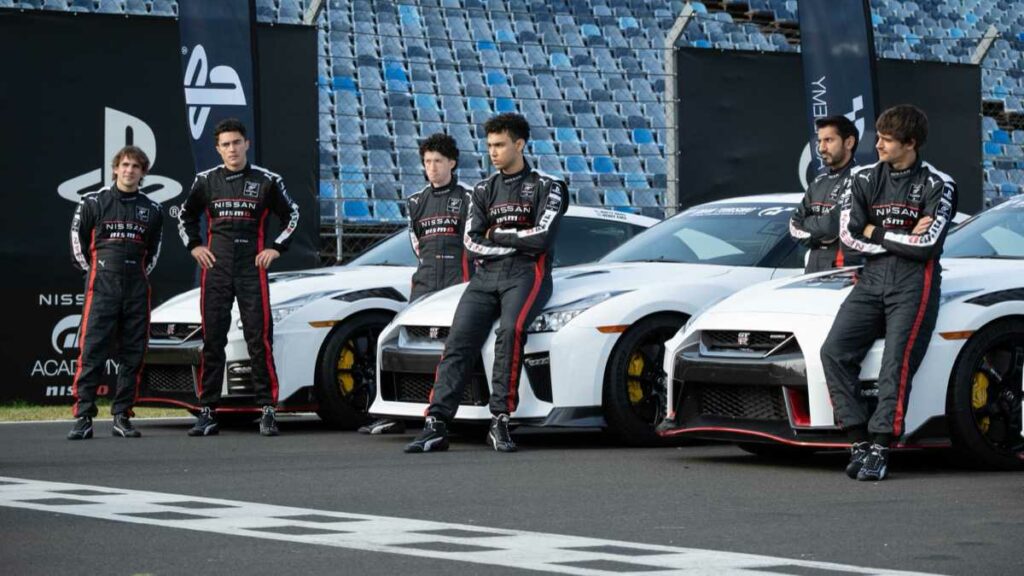
What’s clever here is how the film weaves the gaming world into the storytelling. Instead of just showing Jann’s skills on the racetrack, it constantly reminds you where he started – in front of a screen, just like millions of gamers worldwide. The film doesn’t just dismiss gaming as some mindless pastime; instead, it highlights the precision, reflexes, and strategic thinking required to master a game like Gran Turismo. As Jann navigates real-life races, the film frequently taps into that gaming mentality, creating a bridge between his virtual training and the high-stakes world of professional racing.
And let’s not forget the emotional pull. The film isn’t shy about exploring Jann’s family dynamics, particularly the tension between him and his sceptical father, who doesn’t quite see the future in virtual racing. It’s a familiar, relatable conflict – the age-old “get a real job” talk that many gamers and dreamers have faced at one point. This emotional grounding keeps the story from being just about fast cars and glory, making it feel like a journey of personal growth and perseverance.
In a nutshell, Gran Turismo: Based on a True Story gets its narrative engine revving by seamlessly blending a feel-good underdog story with high-speed thrills, all while respecting the gaming roots that make it unique. The plot stays tight and focused, with enough personal drama, suspense, and roaring engines to keep you engaged from start to finish. For anyone who’s ever dreamed of going from gamer to champion, this film delivers the ultimate fantasy – and does it with serious horsepower.
Performances
Let’s be honest – when you’re making a film about a gamer who turns pro racer, the casting could quickly go off the rails. But Gran Turismo: Based on a True Story gets it right, delivering a performance lineup that balances heart, grit, and plenty of humour.
Archie Madekwe steps into Jann Mardenborough’s racing boots and boy; he nails it. It isn’t easy to sell the transition from joystick jockey to legit racecar driver, but Madekwe pulls it off with quiet intensity. From the moment we meet Jann, you can see the fire in his eyes – the hunger to prove he’s more than just a “gamer.” As Jann leaps from the couch to the cockpit, Madekwe brings an authenticity to the role that grounds the character in reality. He’s not some cocky hotshot; he’s a kid with a dream, juggling the pressure of real-world racing while battling self-doubt.
And speaking of balancing acts, David Harbour is the grizzled mentor every underdog story needs. Playing Jack Salter, a former driver with a tough-love approach to training, Harbour brings a world-weary vibe that anchors the film. He’s the guy who’s been burned by the sport and isn’t too thrilled about babysitting a gamer. Harbour’s performance is equal parts humour and heart as he reluctantly grows to respect Jann’s dedication. Their chemistry is dynamite, with Harbour delivering lines as sharp as a hairpin turn – always ready with a sarcastic quip or a brutally honest critique.
Orlando Bloom plays Danny Moore, the marketing mastermind who dreams of turning a gamer into a professional racer. Bloom’s portrayal is slick, charming, and just the right amount of over-the-top to remind us that, while this is based on a true story, the world of motorsport is also a whole of corporate ambition and flashy PR stunts. His character is the showman behind the scenes, pulling the strings and selling the dream of turning virtual racers into real-world champions. There’s a nice push-and-pull between Bloom’s enthusiasm and Harbour’s scepticism, giving the film some fun moments of tension and levity.
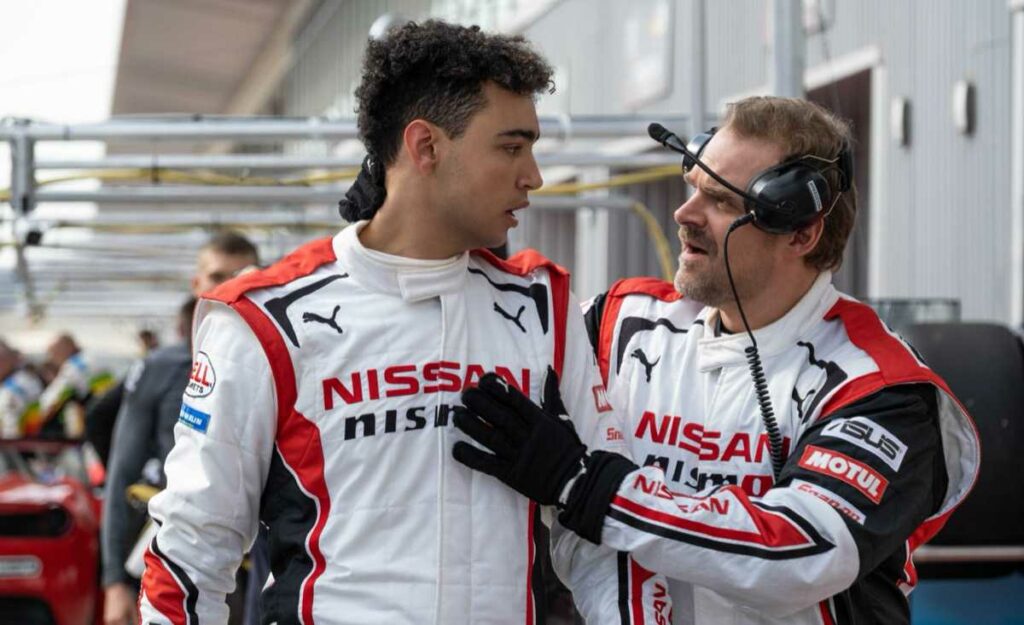
What’s refreshing about the performances is that none of the characters feel one-dimensional. While Jann’s story is the central focus, the supporting cast is given enough depth to make their arcs meaningful. Jack’s walls start to come down as he believes in Jann. Danny’s relentless optimism begins to show cracks when the harsh realities of motorsport collide with his grand vision. Even Jann’s family, particularly his father, played with a stern but caring edge, offering a relatable dynamic that grounds the movie in a real-world struggle.
While visually spectacular, the film’s racing sequences would lose some of their punch if the performances weren’t strong enough to carry the emotional weight behind them. The actors make you believe that every lap, every corner, and every split-second decision has stakes far beyond the podium. You’re not just rooting for Jann to win – you’re rooting for him to overcome his inner battles and prove to himself (and the world) that he belongs.
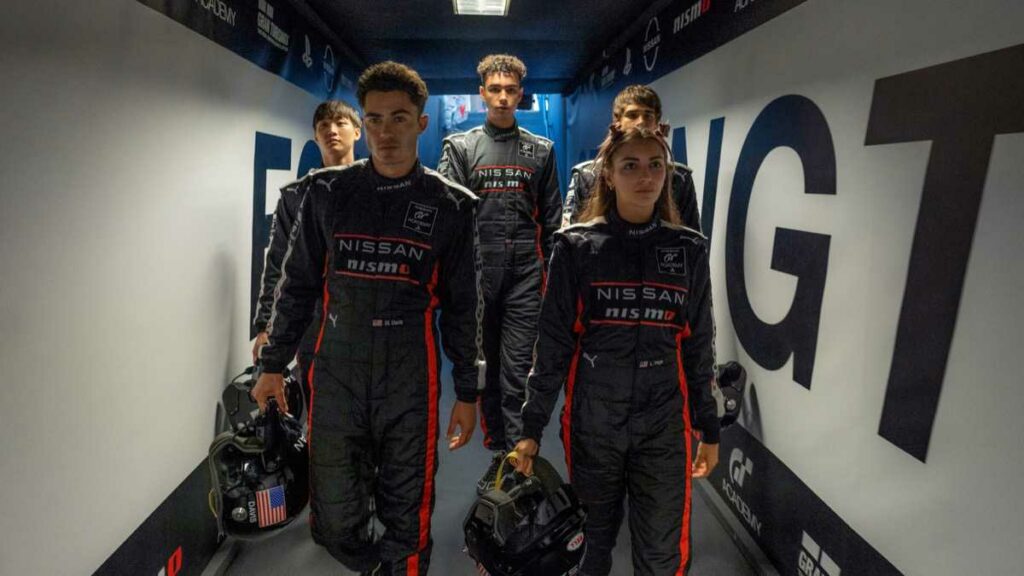
To summarise, the performances in Gran Turismo: Based on a True Story elevate the film from a standard racing flick to an emotional, character-driven story about determination and the power of believing in your abilities. Whether Madekwe’s quiet intensity, Harbour’s gruff mentorship, or Bloom’s high-energy enthusiasm, the cast fires on all cylinders, making the story feel genuine and relatable. And for an underdog tale, that’s precisely what you need to keep audiences strapped in for the ride.
Cinematography and Visual Effects
Let’s talk visuals because Gran Turismo: Based on a True Story is an absolute feast for the eyes. Whether you’re a casual moviegoer or a full-blown motorsport fanatic, the cinematography and visual effects are engineered to hit you like a burst of nitrous. The film brings two worlds together – the sleek, digital universe of gaming and the raw, visceral intensity of real-life racing – and it does so in a way that’s both seamless and exhilarating.
The racing sequences are breathtaking. Director Neill Blomkamp, known for his sharp visual style, doesn’t hold back. When Jann takes to the track, the camera work pulls you right into the action. The way the film captures speed is unique – you feel every gear shift, every tyre squeal, and every rush of acceleration. There’s no need for over-the-top CGI trickery because the combination of practical effects and carefully orchestrated camera angles does the job beautifully.
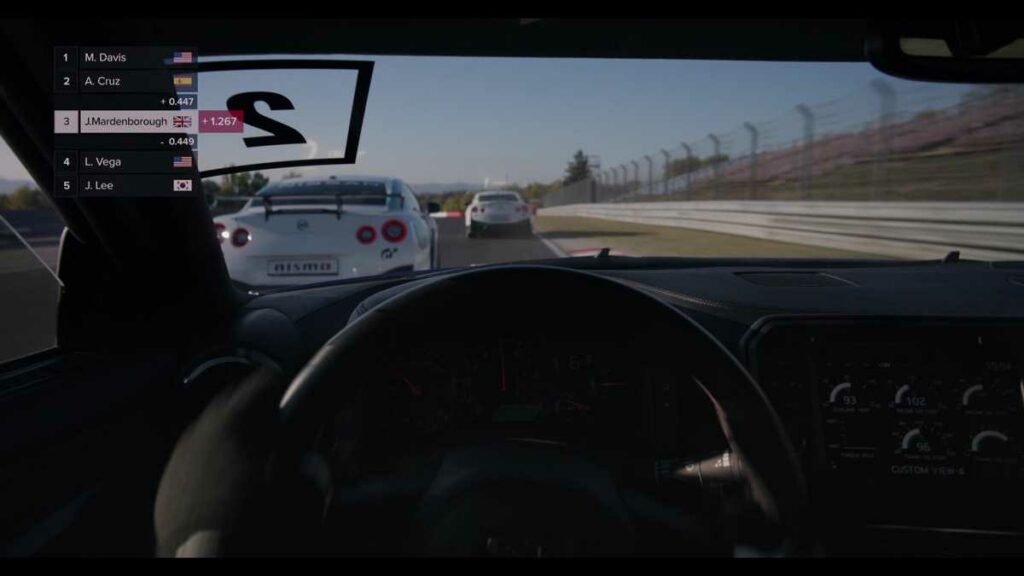
One of the standout visual elements is how the film cleverly integrates the world of Gran Turismo gaming into the real-life racing sequences. You’ll see subtle nods to the game’s interface, from HUD-style overlays to gaming-inspired camera angles that make it feel like you’re flipping between the cockpit and an in-game replay. It’s a clever way to remind the audience of where Jann’s journey began without pulling you out of the real-world intensity of the race. It’s the kind of attention to detail that gamers will appreciate, and it adds an extra layer of excitement for those familiar with the Gran Turismo series.
Blomkamp also uses dynamic camera movements to highlight the drama of motorsport. There are moments when the camera clings to the car’s side like a bug in the wind, following Jann as he overtakes opponents or barely holds a corner. These shots give you the sensation of riding a shotgun, bracing yourself for every twist and turn of the track. Wide-angle shots of the race allow you to appreciate the scale of the events, while close-ups focus on the high-pressure environment inside the car – the cramped cockpit, the sweat on Jann’s brow, the look of steely determination as he grips the wheel.
And let’s not forget the crashes. Motorsports can be brutal, and Gran Turismo doesn’t shy away from showing just how dangerous the sport can be. The crashes are executed with precision, mixing practical effects with CGI in a terrifying and captivating way. You can feel the weight of the cars as they collide, flip, or spin out of control, each impact landing with bone-rattling intensity. One particularly intense crash plays a significant role in the story, and it’s captured with such raw power that it’ll have you gripping the armrests.
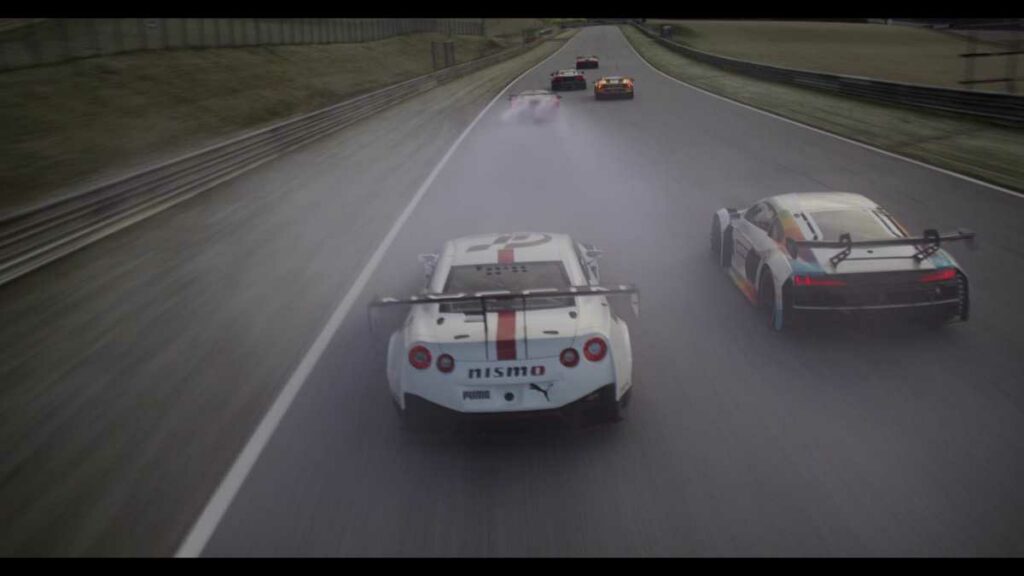
Blomkamp’s knack for creating gritty, immersive visuals extends beyond the race. The pit stops are a chaotic blur of mechanics, strategy, and split-second decisions, shot in a way that makes you appreciate the complexity and precision required to keep these machines running at peak performance. The film doesn’t just glamorise the speed—it also shows the strain, sweat, and sheer endurance required to survive on the track for hours at a time.
However, the cinematography stands out because it balances the gaming world with the real world. The film flickers between Jann’s gaming roots and his reality as a professional driver, using visual cues to connect the two. You’ll catch glimpses of the game’s perspective blended with real-life racing shots, creating a fluidity between the virtual and physical realms. It’s an effective way to remind the audience that this isn’t just a standard racing film – it’s a story about how the skills honed in a digital space can translate into real-life success.
In conclusion, the cinematography and visual effects in Gran Turismo: Based on a True Story are nothing short of spectacular. The film finds the perfect balance between high-octane racing action and nods to its gaming origins, all while keeping the audience deeply engaged in the intensity of the sport. Whether you’re watching Jann navigate tight corners or take on his rivals in life-or-death situations, the visuals keep you glued to the screen, feeling every moment as if you’re part of the race. It’s fast, furious, and unforgettable.
Direction and Screenplay
When you think of Gran Turismo: Based on a True Story, it’s easy to expect a straightforward racing film with a “kid beats the odds” storyline. However, under the direction of Neill Blomkamp, known for his visually innovative work in films like District 9 and Elysium, this film becomes something far more layered. Blomkamp doesn’t just throw fast cars at the screen – he crafts a narrative that pulls you into the high-stakes world of professional racing and the often-overlooked emotional struggles of leaping from virtual to reality.
Blomkamp’s directorial approach is as fast-paced as the races, but he knows when to hit the brakes and let the characters breathe. The film never feels like rushing from one race to another without substance. Instead, Blomkamp takes the time to show Jann’s inner turmoil, whether it’s the intense pressure to succeed, the doubt from his family, or the physical demands of racing in a real car, worlds apart from holding a controller in the comfort of his living room.
What makes the direction stand out is the way Blomkamp effortlessly blends the cinematic with the personal. Sure, the racing sequences are thrilling, but it’s in the quieter moments—Jann’s tense conversations with his father, Jack Salter’s gruff but caring mentorship, and the moments of self-reflection between races—that the film finds its heart. These moments add emotional depth, grounding the film in a story that’s not just about winning a race but about Jann discovering who he is when the stakes get real.
Blomkamp’s knack for creating visual metaphors shines through in his direction. One standout moment shows Jann nervously gripping a steering wheel in the simulator, then later, in the same position, gripping the wheel of a real race car. It’s a powerful transition, illustrating just how thin the line between virtual and reality can be for someone whose life is changing before their eyes. These visual cues and the dynamic camera work during races keep the audience emotionally invested in Jann’s journey, not just his victories.
As for the screenplay, it strikes the right balance between heartfelt drama and high-octane action. The script, written by Jason Hall and Zach Baylin, keeps things tight, with no unnecessary detours. It’s focused, much like the races it showcases. The dialogue feels natural and authentic, with just enough wit to keep things light, especially between Jann and his mentor, Jack. David Harbour’s lines are filled with fierce humour and sarcasm, while Jann’s moments of self-doubt and quiet determination are handled subtly, making him relatable without feeling too scripted.
Impressive is how the screenplay integrates the gaming element without over-explaining or dumbing it down for the audience. Instead of bogging down the film with technical jargon about Gran Turismo, the script trusts the audience to understand the stakes, blending gaming references into the action in an organic way. Whether you’ve spent hours in front of a PlayStation or have never touched a racing game, the film draws you in with clear emotional stakes and relatable themes.
The screenplay also smartly explores the broader theme of perseverance. Jann’s journey isn’t just about racing – it’s about overcoming doubts from every angle. His father doesn’t see the legitimacy of racing as a career; his fellow drivers doubt his skills because he’s “just a gamer.” Even his mentors are sceptical at first. The script handles these obstacles without turning the film into a predictable underdog story. Instead, it lets Jann’s actions speak louder than words, building the tension between his virtual skills and the harsh realities of the racetrack.
The film doesn’t shy away from showing that the stakes are real—both emotionally and physically. A particularly intense crash scene serves as a turning point, not just for the plot but also for Jann’s personal growth. Moments like these, handled with care in both directions and screenplay, remind the audience that while the origin of this story might be in a video game, the consequences in the real world are anything but a game.
In conclusion, Neill Blomkamp’s direction and the well-crafted screenplay work to create a film that’s more than just a showcase of fast cars and gamer dreams. It’s a character-driven narrative that explores the pressures of competition, the complexities of ambition, and the emotional journey of a young man navigating two very different worlds. The story is tight, emotionally resonant, and filled with enough racing action to keep adrenaline junkies satisfied while offering meaningful moments that make the stakes feel accurate on and off the track.
Sound Design and Music
If there’s one thing that cranks up the intensity of Gran Turismo: Based on a True Story, it’s the sound design. Picture yourself behind the wheel, where every gear shift feels like a gut punch and the roar of engines sends a shiver down your spine. That’s precisely what the film delivers. The sound isn’t just an afterthought – it’s a crucial part of what makes this movie a visceral, immersive experience, especially for anyone who’s ever dreamed of the thrill of racing.
The engine sounds alone, which makes you want to put the pedal to the metal on your daily commute. Whether it’s the throaty rumble of a Nissan GT-R or the high-pitched scream of a race-tuned car flying down the straight, the sound design precisely captures the mechanical symphony of motorsport. You don’t just hear the cars – you feel them. Each acceleration, every corner, and the unmistakable sound of tyres gripping the track are perfectly tuned to keep your adrenaline pumping from start to finish.
One of the most impressive aspects of the sound design is how it mirrors Jann’s journey. Early in the film, during the gaming sequences, the sounds are crisp and clean, like the controlled environment of a video game. But as Jann steps into real cars, the sound design becomes more chaotic, reflecting the raw, unpredictable nature of racing in the real world. The film blurs the line between the digital and physical worlds by using sound to remind us that, while impressive, virtual racing is a different beast from the real thing.
But it’s not just the cars that steal the show. The film’s use of silence – or, more accurately, the absence of sound – plays a crucial role in building tension. The sudden lack of noise after a crash or a quiet moment before the green flag drops creates a powerful contrast in the heat of a race. These moments of silence remind us of the stakes, giving the audience time to breathe and heightening the drama when the engines roar back to life. It’s an effective way of using sound to keep the audience hooked, balancing the relentless speed with moments of stillness.
As for the music, the score, composed by Lorne Balfe, complements the action without overwhelming it. Balfe’s soundtrack walks a fine line between propelling the high-speed action and underscoring the film’s emotional beats. The music swells during the key race scenes, giving them an epic feel, but then pulls back to allow the raw engine sounds to take centre stage when necessary. This restraint makes the soundtrack effective – it doesn’t try to compete with the action but enhances it.
The score also taps into the characters’ emotional journeys. When Jann faces moments of self-doubt or personal struggle, the music shifts from the fast-paced adrenaline rush to more subdued, reflective tones. This helps to ground the story, reminding the audience that this is not just a racing film—it’s also about a young man coming of age, dealing with pressure, family expectations, and the weight of chasing an improbable dream.
And let’s not forget the occasional bursts of licensed music woven into the soundtrack at critical moments. These tracks, whether energising beats during a training montage or more introspective tunes in quieter scenes, provide a sense of pace and energy to the film’s narrative. The music choices reflect the vibe of the racing world while also appealing to the gaming culture central to Jann’s story.
Overall, the sound design and music in Gran Turismo: Based on a True Story are a perfect marriage of technical expertise and emotional depth. The roar of the engines, the subtle use of silence, and the balanced score all come together to make the racing sequences feel real and the emotional stakes even higher. For motorsport fans and gamers alike, the sound immerses you fully in the high-speed action and the personal journey, ensuring that the film isn’t just seen – it’s experienced.
Themes and Emotional Impact
At its core, Gran Turismo: Based on a True Story is about more than just fast cars and digital dreams – it’s a story of perseverance, passion, and the blurred line between fantasy and reality. It explores what happens when an unlikely dreamer is given a chance to prove that skills honed in a virtual world can sometimes translate into real-world success. But the film goes beyond the apparent underdog story, delving into themes of self-doubt, risk, and the courage it takes to redefine what’s possible.
One of the film’s most vital themes is perseverance. Jann Mardenborough’s journey is the ultimate “never give up” story. Imagine being told your entire life that something you’re passionate about – in Jann’s case, gaming – will never amount to anything, only to discover that it might just be your ticket to greatness. The film doesn’t sugar-coat the challenges he faces along the way. There are times when Jann’s skills are doubted, not just by his competitors but by the people who have given him the chance to prove himself. His transition from gamer to professional racer is rocky, filled with failures, close calls, and moments where he might not make it. The emotional depth here comes from watching Jann push through those doubts and setbacks, even when the odds are stacked against him.
The film also digs deep into turning virtual skills into real-world results. For Jann, gaming wasn’t just a hobby – it was his training ground. But when he steps into a real race car, he realises just how different the stakes are when the crashes aren’t pixelated, and the danger is all too real. This theme is explored through tense racing sequences, where Jann has to unlearn some of his gaming instincts and adapt to the physical demands of racing at breakneck speeds. There’s a powerful metaphor here about how life’s most significant challenges often come from stepping out of the comfort zones we’ve mastered and into new, uncharted territory.

The film’s emotional core is Jann’s relationship with his family, particularly his father. Like many gamers, Jann faces the classic “get a real job” pressure, with his father viewing racing – especially gaming-based racing – as a pipe dream. This tension between father and son adds a relatable layer to the story, grounding Jann’s larger-than-life journey in a human conflict. The moments where Jann has to prove to his father that his gaming skills have real-world value are some of the film’s most emotionally charged scenes. It’s not just about winning a race; it’s about winning respect and proving that unconventional paths can lead to success.
Another theme that stands out is the inherent risk of motorsport. This film doesn’t gloss over the dangers of racing – it confronts them head-on. There’s a pivotal scene where Jann faces a devastating crash, and it’s a stark reminder that racing is a high-stakes game where the price of failure isn’t just losing a race – it could be much worse. This moment forces Jann to confront the harsh realities of his dream. It pushes the film into emotionally darker territory, showing the toll that high-pressure sports can take on drivers and their families.
The theme of mentorship is also woven into the film, mainly through the character of Jack Salter (David Harbour). Jack’s tough-love approach to guiding Jann through the transition from gaming to professional racing brings both heart and humour to the film. He’s initially sceptical, treating Jann like a kid who has no business being on the track, but as the film progresses, you watch their relationship evolve into something more profound. Jack becomes a surrogate father figure, and through his mentorship, Jann learns that being fast on the track isn’t enough – you also need mental toughness and resilience. Their dynamic adds emotional weight to the story, with Jack’s career failures providing a mirror for Jann’s struggles.
By the time the film hits its final lap, the audience has been taken on a journey that’s as much about personal growth as it is about racing. The emotional payoff is watching Jann succeed in his sport and grow as a person, overcoming doubts from his family, his mentors, and even himself. The film ends with a message that resonates beyond the world of racing: no dream is too big, and sometimes, the things that others dismiss as hobbies or distractions can be the very tools that lead to greatness.
In conclusion, Gran Turismo: Based on a True Story delivers a powerful emotional impact by blending high-speed thrills with perseverance, risk, and personal growth themes. It’s a film that reminds us that success isn’t always about where you start – it’s about how hard you’re willing to push to make your dreams a reality, even when those dreams come from the unlikeliest places. For audiences, the emotional ride is as gripping as the race itself.
Reception and Legacy
When Gran Turismo: Based on a True Story hit theatres, it was clear that this film had the potential to carve out a unique space in the racing movie genre. Its blend of gaming culture and motorsport history, combined with the emotional underdog story, struck a chord with audiences, particularly those who’d grown up with a controller in hand. But how did it fare in the broader world of film critics, racing enthusiasts, and everyday viewers?
The reception of Gran Turismo has been generally positive, with many praising its ability to balance high-octane racing action with a heartfelt story. For gamers, especially fans of the Gran Turismo series, the film celebrates what they’ve always known – that gaming isn’t just a distraction; it’s a skill. Seeing Jann Mardenborough’s journey from virtual to real-world racing was an inspiring reminder that dreams can be realised in the most unexpected ways. This unique angle gave the film a distinct place in the genre, appealing to an audience that loves motorsport and gaming.
On the other hand, racing fans appreciated the film’s authentic portrayal of motorsport. The intense, realistic racing sequences, captured with precision and attention to detail, gave the film credibility with die-hard petrolheads. It wasn’t just about the drama; it was about the visceral thrill of racing, the danger, and the incredible skill it takes to succeed at high speeds. The film’s accurate representation of motorsport culture – from the tension in the pit lane to the split-second decisions on the track – resonated deeply with fans of the sport.
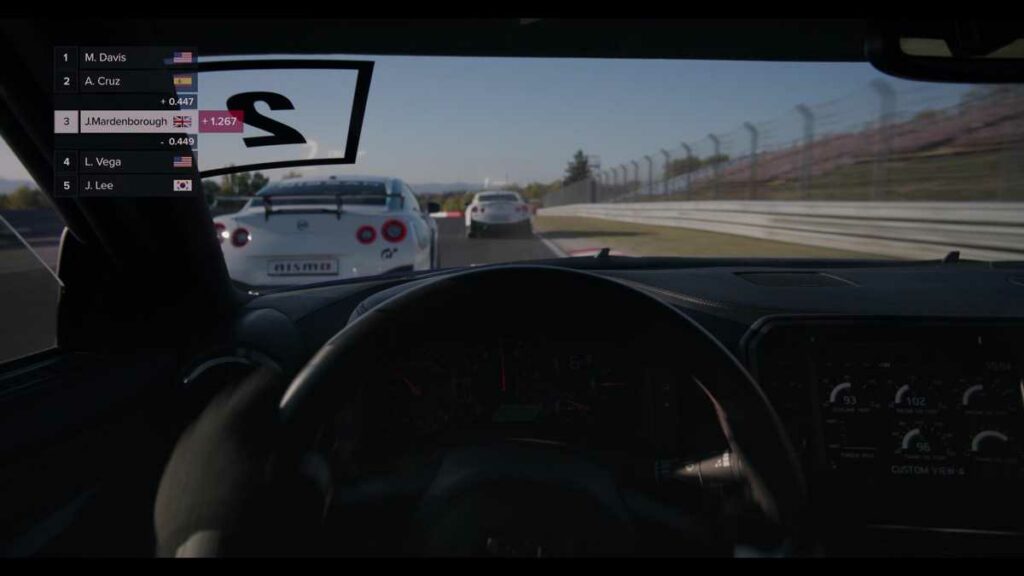
Critics were split, however. While some praised the film’s action-packed sequences and emotional depth, others felt the narrative was too formulaic, following the familiar beats of a typical underdog sports film. But even critics who weren’t blown away by the storyline couldn’t deny the film’s visual spectacle and the clever way it integrated gaming into a traditional racing narrative. For many, the refreshing blend of these two worlds made Gran Turismo stand out, even if the plot followed familiar territory.
As noted by both fans and critics, one of the film’s greatest strengths is its ability to bring gaming into the cinematic mainstream without turning it into a gimmick. Gran Turismo respects the gaming community, and that authenticity shines through. It doesn’t just use gaming as a hook to draw in a younger audience – it recognises the skill, strategy, and dedication that goes into mastering a game like Gran Turismo and places that on equal footing with real-world racing. This blending of virtual and real worlds feels modern and relevant, especially in an age where esports are gaining recognition alongside traditional sports.
As for its legacy, Gran Turismo has the potential to be remembered as a film that bridged two communities: gamers and motorsport fans. It’s one of the first films to seriously tackle the idea of sim racing as a legitimate stepping stone into professional motorsport. That concept resonates with a generation that grew up playing games that were far more than entertainment. For fans of the Gran Turismo series, the film is a love letter to their gaming passion, showing that the skills they’ve honed in front of a screen could, in rare cases, lead to something extraordinary.
Looking forward, Gran Turismo may inspire a wave of films exploring similar themes – the intersection of virtual and real-world achievements. It’s a story that feels timely in today’s digital age, where the lines between reality and simulation are increasingly blurred. Whether inspiring a new generation of gamers to take their skills seriously or giving motorsport fans a fresh perspective on racing, the film’s impact will likely be felt for years.
In conclusion, Gran Turismo: Based on a True Story has left its mark by blending high-speed racing with heartfelt drama and celebrating gaming culture. While it follows some familiar underdog tropes, it distinguishes itself by honouring both the gaming and motorsport worlds in an authentic and exciting way. Its legacy is likely to be that of a film that showed the real power of virtual skills, turning a controller into a steering wheel and making dreams a reality.
Conclusion
Gran Turismo: Based on a True Story accelerates past the typical racing movie, offering not just the thrill of high-speed action but also a heartfelt story of perseverance and ambition. Under Neill Blomkamp’s direction, the film seamlessly merges the gaming and motorsport worlds, creating a visual and emotional spectacle that keeps audiences strapped in for the ride. With standout performances, breathtaking cinematography, and themes that resonate deeply with anyone who’s ever dared to dream big, the film leaves a lasting impression.
Whether you’re a hardcore gamer, a die-hard motorsport fan, or someone who loves a good underdog story, Gran Turismo delivers the goods. It’s more than just a racing movie – it’s a celebration of breaking boundaries, taking risks, and proving that dreams are worth chasing, no matter how unconventional. So, if you haven’t already, grab some popcorn, settle in, and prepare to be taken on one hell of a ride.


